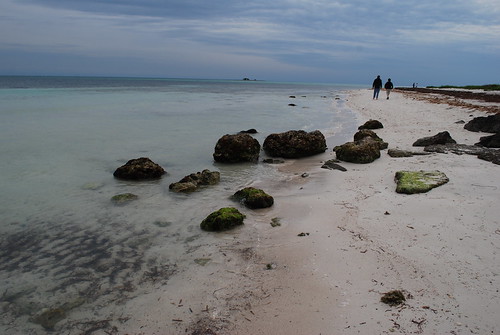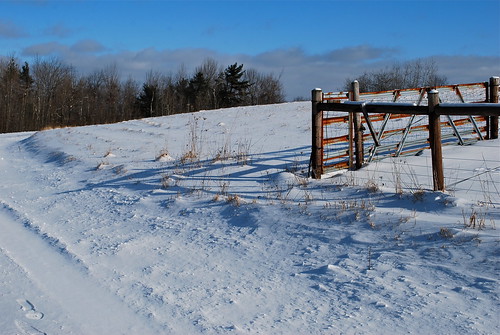Watching some of the Olympic ice skating made me miss my Aunt Seashell. She used to call me on the phone, and say,”Hey, there’s ice skating on television right now,” and I’d switch my television on. Once as a present, she bought my daughter and me tickets to an ice skating show. She died ten years ago, and I haven’t watched much ice skating since.
Of course, now when I look at the Olympic athletes, they remind me of my own kids. I kept looking up at the screen to see scruffy young men with long hair, totally focused on their sports, going all out to win, often the same age as Boy in Black or Shaggy Hair Boy, and I’d recognize that same intensity that drives my kids to succeed on the Ultimate field and at the piano and in the classroom.
Many of my friends say that they hate it when skaters or skiers fall, but I like watching the dramatic tumbles. At the Olympics, you’ve got athletes who are the best in their country at what they do — and yet, they still make mistakes. I find that strangely comforting.
February 28, 2010
February 27, 2010
Still February
Our driveway looks like a bobsled run, with tall sides of melting white and an icy track that our cars slip down. Little Biker Boy helped me bring in logs for the fire that's crackling and now he's upstairs asking Shaggy Hair to give him a turn playing a computer game. With-a-Why and I are sitting on the couch, looking at my photos from the Sunshine State. As I watch the snowflakes hitting the window, it's hard to believe that just a week ago, I was walking through mangroves in a t-shirt and shorts.
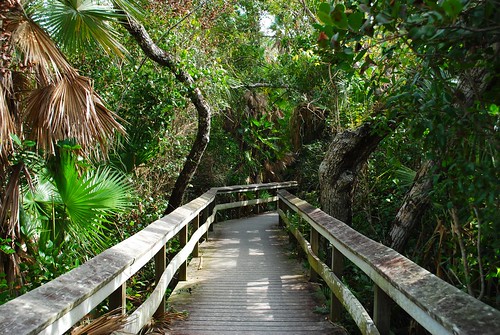

February 26, 2010
Crossing paths

When we first got to the Sunshine State, I kept taking photos of every palm tree and alligator I saw. The palm trees seemed so exotic to me. And the alligators! The first time I saw one, I was on a boardwalk, out of its reach. But then we started seeing them everywhere, lying sleepily along paths that we were walking along, or swimming in drainage ditches. Once I got used to the alligators, it was easy to think of them as harmless logs, and I had to keep reminding myself to be mindful.
Because I’m used to hiking in woods without poisonous snakes or any kind of predator that can hurt humans, I have a tendency to be oblivious when I’m walking along. I was parking my bike outside a nature trail in one parking lot when a teenage girl called over to me, “Stop! You don’t want to park your bike there.” I hadn’t even noticed the huge alligator stretched behind some of the other bikes. I might have rolled my bike right into him if she hadn’t stopped me.
Later that day, we stopped for a turtle that was crossing the road. At the sound of our car, the turtle immediately pulled into its shell, stopped right in the middle of the pavement. I scooped it up and took into the nearest pond, climbing down under the trees and putting it into the water. As it swam away, I thought to myself, “I should have checked for alligators first.” Of course, I should have thought of that BEFORE climbing down the bank.
I wonder, if I had grown up in a landscape with alligators and poisonous snakes, if I would have learned to be more mindful, more observant, more aware.
February 25, 2010
Wings
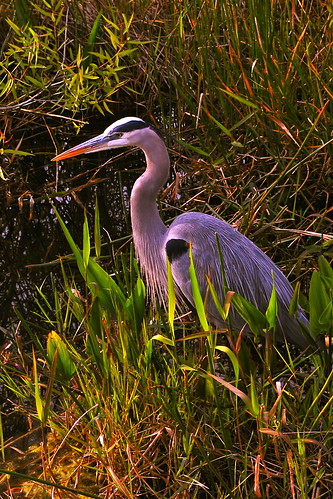
I couldn’t help but notice the birds while we were in the National Park of Sawgrass and Alligator. In one lagoon, pelicans were diving for food, hitting the water with great slaps of energy. Some of the birds, like the great blue heron, were familiar to me, because we have them up on the river, but many of the birds were ones I’d never seen before. The coolest was the anhinga, a bird that has evolved to swim. I watched an anhinga swim underwater, its wings all folded up, wiggling its body like a small child would and then spearing a fish with her beak. Then she came to the surface to toss the fish in the air and gulp it down. When she was done fishing, she flew to a fence post to spread her wings to dry. All through the park, we’d see these birds, in trees or on fences, holding their wet wings up to the sun.
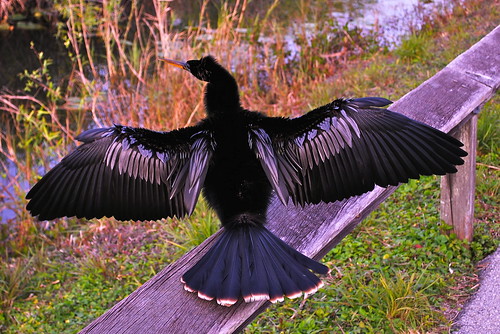
Sprayed
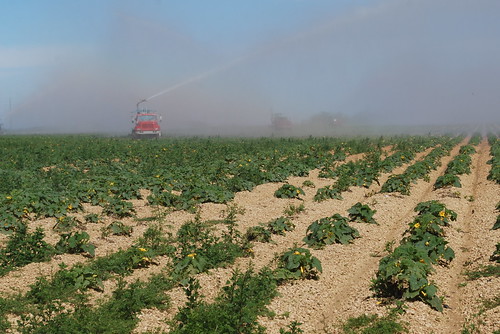
As we drove along in the rental car in Sunshine State, I kept saying how nice it was to have the windows open, to feel the warm breeze. Then we passed through a flat section of farm, where trucks were spraying the fields with liquid. I’m not sure what was in the spray: fertilizer, perhaps, or insectides, or both. I have no way of knowing what toxins it might contain. But I rolled up the window quickly as the truck moved towards us, and our whole car was soon covered with a sticky film. When we drove back through that evening, the trucks were still out spraying, and our car was doused yet again.
February 24, 2010
February 23, 2010
Visit to the land of alligators and palm trees
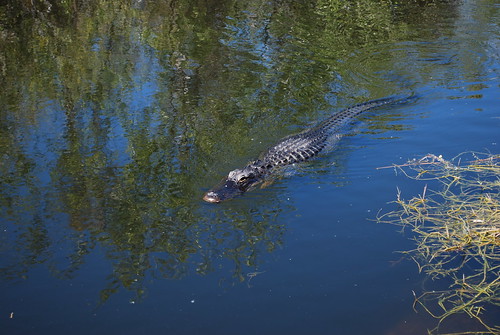
The southern part of Sunshine State might be the flattest place I’ve ever visited: I didn’t see a single hill. Perhaps that’s why the developed parts seemed so relentlessly ugly. We drove through an endless expanse of parking lots, strip malls, big stores, and apartment complexes that looked like military barracks. Here in the northeast, we have hills and valleys that create pockets of natural areas, and trees to hide concrete and asphalt. In a perfectly flat landscape, eyesores remain eyesores.
In contrast, the national park we visited, filled with sawgrass and alligators and turtles, was more beautiful than I expected. We stopped at every interpretive trail and walked on boardwalk trails through mangroves and boggy areas, all the time listening to bird song and watching alligators. We rented bikes and rode out to a tower that overlooked the rippling fields of sawgrass. I saw birds I’ve never seen before and flowers that were blooming in February.
We drove through a famous chain of islands that, ironically, would have been so much nicer without the highway we were driving on. Some of the smaller islands functioned bridge supports, and the highway didn't leave room for much else. We kept seeing broken bridges, deserted and left standing, replaced by a stronger, bigger bridge, and buildings that had been abandoned after hurricanes. Despite that, the beaches were still lovely, with clear water and silty sand. I wondered why they were so empty, but then I saw a poster on a bulletin board that the water wasn’t safe to swim in because the bacteria levels were too high.
That was the impression I kept getting: Southern State of Alligators and Palm Trees was stunningly beautiful, but damaged and abused, as if somewhere along the line, humans didn’t understand the value of that beauty.

February 18, 2010
Gone south
I'm travelling without my laptop computer so I won't be online for a few days. In the meantime, I've been taking pictures of alligators, mangroves, and a river of grass. A whole day of sunshine has made me forget that it's February. I'll post photos when I return.
February 16, 2010
Sunset in Traintrack Village

I’d had a cup of tea at my parents’ house, sitting at their kitchen table, eating cookies and talking. Their kitchen walls are painted yellow, so the room is cheerful even on a winter day. On my way home, I noticed that the sun sending shimmers of colour through the trees so I took the road to the railroad track and got out to look at the horizon. The woods behind me were silent, and the ice crackled under my boots as I walked along the tracks, breathing in the dusk and listening for the rumble that would mean a train was coming.
February 15, 2010
The path I'm on
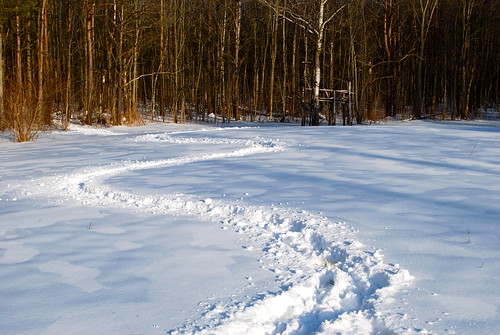
When the blocks of sunshine appeared on my living room floor, I made a fast decision to leave the work I was doing and go for a walk in my woods. I’d just been telling my friends that I need to get outside more during February, to let the sun and fresh air chase away February demons. I grabbed a pair of tall boots and went out the back door.
I soon realized that I’d grabbed the wrong pair of boots. They were way too big. But I figured they’d be good enough. I kept on going, trudging happily through the snow.
And then it started. With each step I took, I could feel my socks creeping down. First the left, then the right. I’d walk until the socks were bunched up under my heels and when the lump got so annoying that I felt like screaming, I’d stop and balance on one foot to pull each sock up.
I didn’t think any profound thoughts or have any deep revelations or have any sort of intense communion with nature. Mostly, I stomped through the woods and thought about my socks. Maybe if I walked differently, I could get them to stop creeping down. Maybe if I just pulled them tight enough and got the heels aligned exactly right. Maybe if I tucked my jeans into the top of the socks to hold them.
I can remember as a little kid, wearing boots that belonged to an older sister, and coming inside to find my white cotton socks crumpled at the bottom of the boots. In those days, I accepted sock creep: I didn’t fight it.
I walked through the pine woods to the dancing tree, crossing over the tracks of rabbits and white-tailed deer, filled with envy at these other creatures who didn’t have to wear socks. I tried zigzagging to see that might solve the sock problem. I kept thinking about the physics of sock creep. It must have been the friction of the sides of the boots rubbing against the socks that pulled them down. These socks had stayed up fine in the house when I didn’t have boots on.
It wasn’t until I had trudged back through the yard, stopping twice to pull up my socks in sight of the back door, that I realized what a satisfying walk it had been. I hadn’t had time to think about any February scars or obsess over any of the new things that were bothering me. The sock creep had crowded all other thoughts out of my mind. I’d achieved what I can rarely achieve during mediation: I thought about nothing. As I stepped onto my back step, my mind was as blank as a field of new snow.
When I stepped back into my warm house, I kicked the boots off. They hit the kitchen wall and fell to the floor with a satisfying thump.
February 14, 2010
Antidote to February
February can be a difficult month in Snowstorm Region. By mid-February, I’m tired of taking pictures of snow, I’m tense from driving on icy roads, and I’m beginning to think that my feet will never get warm again. Winter driving keeps most people close to home during February, which is tough for an extrovert like me. And it seems like every year, we have at least one funeral to go to in January or February: a dying person will rally to spend one more holiday season with family and friends, but then he or she does not survive the winter. February is a sad month, filled with loss and re-opening emotional scars.
But one group of my women friends have an antidote to the February blues. It’s our annual pajama party. It’s an event that helps us survive the longest month of the year.
We gathered last night, with sleeping bags and pillows and games. We brought food: hot soup, and pasta dishes, and cookies, and chocolate. We drank gallons of tea. We sat by the fire and talked, and played a silly game, and got caught up on each other’s lives. Quilt Artist couldn’t come this year: her father died last week and she was in Southern State for the memorial service, but she called in the early evening so that we could pass the phone from woman to woman and talk to her about her last moments with her Dad. Signing Woman passed around photos about a happier occasion that also happened last week: the birth of her grandson. It was nice to have that reminder that February brings its share of happy events as well as sad.
After everyone else had gone to sleep, Beautiful Hair and I stayed up late by the fire talking. We were both tired, but it felt luxurious just to watch the flames, listen to the logs crackle, and talk lazily without worrying about the time. “The older I get, the more important friendship is to me,” she said.
“Yep,” I agreed. Then we ate some more chocolate and kept on talking.
But one group of my women friends have an antidote to the February blues. It’s our annual pajama party. It’s an event that helps us survive the longest month of the year.
We gathered last night, with sleeping bags and pillows and games. We brought food: hot soup, and pasta dishes, and cookies, and chocolate. We drank gallons of tea. We sat by the fire and talked, and played a silly game, and got caught up on each other’s lives. Quilt Artist couldn’t come this year: her father died last week and she was in Southern State for the memorial service, but she called in the early evening so that we could pass the phone from woman to woman and talk to her about her last moments with her Dad. Signing Woman passed around photos about a happier occasion that also happened last week: the birth of her grandson. It was nice to have that reminder that February brings its share of happy events as well as sad.
After everyone else had gone to sleep, Beautiful Hair and I stayed up late by the fire talking. We were both tired, but it felt luxurious just to watch the flames, listen to the logs crackle, and talk lazily without worrying about the time. “The older I get, the more important friendship is to me,” she said.
“Yep,” I agreed. Then we ate some more chocolate and kept on talking.
February 12, 2010
Stories in the landscape
On our way home from an errand today (we had to drop his car off at a dealership to get a defective steering unit replaced), my father and I drove past the house where he had lived as a teenager. The homestead, he calls it. Someone else owns the house now. The road we were on has stayed the same over the last sixty years, widening but following the same path, but much of the landscape we were driving through has changed.
“Those houses weren’t there,” my father said, “It was just a field. I’d come riding my bike through here at night, and the wind would come whipping across.”
As we turned the corner, he pointed to two cape cod houses, much like the house I grew up in. “My father built those,” he said. My grandfather, who died before I was born, was a master carpenter, and one of my father’s clearest childhood memories is hanging out a window, with a hammer in his hand, working on a house with his father.
“The guy who lived in that house used to fix my bike,” my father said. “And up that street was the guy who butchered our pig.”
He gestured toward a woody area just beyond another cluster of houses. “Over there, that’s where I had my trap line. You can still see the creek.”
We turned onto a four-lane road, crowded with commercial buildings, parking lots, and small businesses. “This whole area was a farm,” he said. “There was a pond in the middle for the cattle.”
I’ve heard my father’s stories so many times that sometimes when I’m in the car with my kids, I’ll point out places that are no longer there, places that disappeared before I was even born. The other day when I was driving my daughter home from the train station, I pointed to an old house on a corner.
“Your grandfather used to play there sometimes,” I said to her.
“Yeah, when he was a musician,” she said. “It was a joint. That’s what he called it.”
I looked at her, surprised that she already knew the story.
“He always tells me that story when he gives me a ride home,” she explained.
Of course.
“Those houses weren’t there,” my father said, “It was just a field. I’d come riding my bike through here at night, and the wind would come whipping across.”
As we turned the corner, he pointed to two cape cod houses, much like the house I grew up in. “My father built those,” he said. My grandfather, who died before I was born, was a master carpenter, and one of my father’s clearest childhood memories is hanging out a window, with a hammer in his hand, working on a house with his father.
“The guy who lived in that house used to fix my bike,” my father said. “And up that street was the guy who butchered our pig.”
He gestured toward a woody area just beyond another cluster of houses. “Over there, that’s where I had my trap line. You can still see the creek.”
We turned onto a four-lane road, crowded with commercial buildings, parking lots, and small businesses. “This whole area was a farm,” he said. “There was a pond in the middle for the cattle.”
I’ve heard my father’s stories so many times that sometimes when I’m in the car with my kids, I’ll point out places that are no longer there, places that disappeared before I was even born. The other day when I was driving my daughter home from the train station, I pointed to an old house on a corner.
“Your grandfather used to play there sometimes,” I said to her.
“Yeah, when he was a musician,” she said. “It was a joint. That’s what he called it.”
I looked at her, surprised that she already knew the story.
“He always tells me that story when he gives me a ride home,” she explained.
Of course.
February 11, 2010
February 10, 2010
February
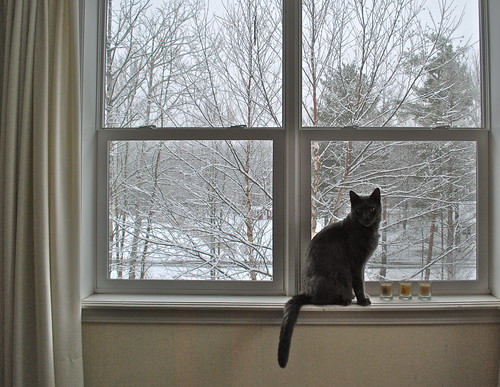
Yes, it’s still February. It’s the toughest month for the cats of the household, because they get tired of having to stay in, but it’s too cold and icy for them outside. So they leap from windowsill to windowsill. They meow and scratch and demand to go outside and then meow to be let right back in. And they pee on random things to show their displeasure. The humans in the household aren’t much better. It’s a very long month.
February 09, 2010
Talking circle
“The history books use the past tense when they talk about us,” said Elder Woman. She talked about how kids at boarding schools were punished for speaking in the native language, how the dominant culture sought to make her people invisible.
She spoke to an audience of peace activists, college students, artists, native elders, college professors, musicians, lacrosse players, and a handful of small children. Many nodded as she spoke. The man in the ceremonial shirt, with its long strings of fabric swaying as he moved, spoke into the microphone, “Well, we know we’re here even if no one else does.”
Everyone laughed, and he continued. “We are not of the past. We are not just mascots. We are people.”
Last night was the first in a series of events, a year-long dialogue between the People of the Longhouse, who have lived here since the beginning of time, and their neighbors — those of us who have arrived in the last couple of centuries. We’ll be talking about Polluted Sacred Lake, which has been labeled the most chemically polluted lake in the country. We’ll be talking about everything from hydrofracking to lacrosse.
There was food at the event, of course. We milled about after the panel, everyone clutching heavy winter coats and little plates of fruit, crackers, and cheese. We found our way into smaller talking circles, and that’s where each person had a chance to speak up. We talked about healing.
The tadadaho, the spiritual leader, sat next to me, listening quietly as the conversation moved around the circle. When it was his turn to talk, he talked about the urgency of environmental issues. “We have no time for color,” he said. “It’s up to us as a species to do something. We’re in the early stages of global warming already.”
I looked around the circle to see nods from the young college student who had just moved here last year, the older woman who has lived here since childhood, the elementary school teacher who is the son of a chief, the young man in the orange sweater. Everyone was listening. “You can’t negotiate with nature,” he said. “We need to work together.”
I felt somber when the event ended. As I made my way out of the building to go to my car, I stopped to look up at the night sky, lit by streetlights and moonlight. Dozens of birds, their wings stretched out, were flying over, rushing over my head, one after another. I stood and watched until they had all disappeared.
She spoke to an audience of peace activists, college students, artists, native elders, college professors, musicians, lacrosse players, and a handful of small children. Many nodded as she spoke. The man in the ceremonial shirt, with its long strings of fabric swaying as he moved, spoke into the microphone, “Well, we know we’re here even if no one else does.”
Everyone laughed, and he continued. “We are not of the past. We are not just mascots. We are people.”
Last night was the first in a series of events, a year-long dialogue between the People of the Longhouse, who have lived here since the beginning of time, and their neighbors — those of us who have arrived in the last couple of centuries. We’ll be talking about Polluted Sacred Lake, which has been labeled the most chemically polluted lake in the country. We’ll be talking about everything from hydrofracking to lacrosse.
There was food at the event, of course. We milled about after the panel, everyone clutching heavy winter coats and little plates of fruit, crackers, and cheese. We found our way into smaller talking circles, and that’s where each person had a chance to speak up. We talked about healing.
The tadadaho, the spiritual leader, sat next to me, listening quietly as the conversation moved around the circle. When it was his turn to talk, he talked about the urgency of environmental issues. “We have no time for color,” he said. “It’s up to us as a species to do something. We’re in the early stages of global warming already.”
I looked around the circle to see nods from the young college student who had just moved here last year, the older woman who has lived here since childhood, the elementary school teacher who is the son of a chief, the young man in the orange sweater. Everyone was listening. “You can’t negotiate with nature,” he said. “We need to work together.”
I felt somber when the event ended. As I made my way out of the building to go to my car, I stopped to look up at the night sky, lit by streetlights and moonlight. Dozens of birds, their wings stretched out, were flying over, rushing over my head, one after another. I stood and watched until they had all disappeared.
February 07, 2010
Frogs on the altar
When I was a kid, our summertime church was the church near my parents’ camp. The gentle pastor, an old Irish priest, liked kids and frogs. He had a whole collection of frogs, in fact, stuffed frogs, statues of frogs, toy frogs, even an original painting of a frog done by Fairly Famous Local Artist. It’s always hard to figure out what kind of gift to give a priest so once the word was out that he liked frogs, people latched onto that idea and soon this well-loved priest had every frog knickknack that had ever been designed.
He kept these frogs on the side altar. “Adults are not allowed to touch the frogs,” Old Irish Priest would say. “But kids are allowed to play with them whenever they want.” And during Mass, you’d see kids going over to play with the frogs: the stuffed ones, the bone china ones, the expensive crystal ones.
I was too shy to go up and grab a frog, but I would stare at the collection and imagine them hopping over pews, croaking during the readings, filling the church with song.
This same priest would try to get the kids in the church to come up during the Sign of Peace, a ritual that involves shaking hands with your neighbor. He’d gather a pack of children on the altar, he’d whisper and joke with them, and then he’d send them weaving through the crowd to shake hands with the congregation. My brother and I would crouch down in the pews during the Sign of Peace, too shy to go up to the altar, but sometimes he’d see us and motion for us to come with one crooked finger.
The organist at that small town church knew only one song: “Let there be Peace on Earth.” But she played it faithfully, every Sunday, and we all sang along. Old Irish Priest would ask pregnant women to stay after church for a special blessing: he’d sprinkle their rounded bellies with holy water.
The local people were mostly poor, so Old Irish Priest would ask the tourists and summer people to give extra money to keep the church warm all winter: “the fuel collection” he called it. In return, he promised to keep his sermons to exactly one minute. “I can save your soul in sixty seconds,” he joked.
I don’t think he felt any pressure to save souls. His faith seemed to be in the frogs and the children and the women about to give birth.
He kept these frogs on the side altar. “Adults are not allowed to touch the frogs,” Old Irish Priest would say. “But kids are allowed to play with them whenever they want.” And during Mass, you’d see kids going over to play with the frogs: the stuffed ones, the bone china ones, the expensive crystal ones.
I was too shy to go up and grab a frog, but I would stare at the collection and imagine them hopping over pews, croaking during the readings, filling the church with song.
This same priest would try to get the kids in the church to come up during the Sign of Peace, a ritual that involves shaking hands with your neighbor. He’d gather a pack of children on the altar, he’d whisper and joke with them, and then he’d send them weaving through the crowd to shake hands with the congregation. My brother and I would crouch down in the pews during the Sign of Peace, too shy to go up to the altar, but sometimes he’d see us and motion for us to come with one crooked finger.
The organist at that small town church knew only one song: “Let there be Peace on Earth.” But she played it faithfully, every Sunday, and we all sang along. Old Irish Priest would ask pregnant women to stay after church for a special blessing: he’d sprinkle their rounded bellies with holy water.
The local people were mostly poor, so Old Irish Priest would ask the tourists and summer people to give extra money to keep the church warm all winter: “the fuel collection” he called it. In return, he promised to keep his sermons to exactly one minute. “I can save your soul in sixty seconds,” he joked.
I don’t think he felt any pressure to save souls. His faith seemed to be in the frogs and the children and the women about to give birth.
February 06, 2010
Change
I built a fire, just as I do almost every evening in the winter. With-a-Why had a new book to read, so he grabbed a cushion from the couch and converted the ottoman into a lounge chair. My husband settled in the red chair with his laptop so that he could surf sites as we planned our late-summer vacation. Boy in Black and Shaggy Hair Boy came in after Ultimate practice: Boy in Black took a spot on the floor to begin stretching, while Shaggy Hair went to the kitchen area to look for food.
For all my complaints about the empty-nest syndrome, my house is still not particularly empty. But still, I can feel the changes coming. Boy in Black will graduate from college this year. My youngest child has grown so tall that I have to look up at him now. Shaggy Hair Boy has turned from teenager to confident, poised young man. Although we see her pretty often, my daughter is 150 miles away at her grad school in Bison City. Perhaps the most telling difference is that as we looked at parks and maps on the laptop, my husband and I were planning a summer vacation trip not for six people, but for two.
For all my complaints about the empty-nest syndrome, my house is still not particularly empty. But still, I can feel the changes coming. Boy in Black will graduate from college this year. My youngest child has grown so tall that I have to look up at him now. Shaggy Hair Boy has turned from teenager to confident, poised young man. Although we see her pretty often, my daughter is 150 miles away at her grad school in Bison City. Perhaps the most telling difference is that as we looked at parks and maps on the laptop, my husband and I were planning a summer vacation trip not for six people, but for two.
February 05, 2010
Jamming

Since Sarah Sometimes asked for a photo, here's Ponytail, the little neighbor girl, using the new ottoman as a stage so she could play the guitar pillow while I was practicing piano this afternoon.
February 04, 2010
Home beautiful
When I was staying with Red-haired Niece last summer, and we were looking at photos of the pre-school playground where she taught, she explained they didn’t have traditional playground equipment. Instead, they provided the kids with big blocky objects of different shapes and sizes. The kids needed to use their imaginations and combine the blocks to make a slide, or a playhouse, or something to climb on.
I had that concept in mind last fall when I was driving past a garage sale and noticed three wooden stools. I stopped and bought them from a woman who kept saying, “See, we broke one.” She seemed to think that four stools were a desirable thing to have, while three stools were utterly useless and should be sold to a stranger for a few dollars.
Since then, we’ve used the stools for all kinds of things. Sometimes, I’ll grab one if I’m going to sit down on the couch and need a place to set a cup of hot tea. Sometimes, I’ll use one if I need to set my laptop down for a moment. The kids use the stools as tables, they combine them to support something heavy, or sometimes they even sit on them.
I’m going to call this style of home decorating “Imitation Block School Playground.” Furniture doesn't need to match or even have any obvious function: it's all up to the inhabitants of the house to figure out how to make it work. We’ve long used an old oak bench as a coffeetable, a bench, a sawhorse, or a pedestal to dance on. Today I brought home a random ottoman to set under the front window. I figure we can use it as a window seat, or a soft table, or a foot rest, or whatever else our imaginations can come up with.
I had that concept in mind last fall when I was driving past a garage sale and noticed three wooden stools. I stopped and bought them from a woman who kept saying, “See, we broke one.” She seemed to think that four stools were a desirable thing to have, while three stools were utterly useless and should be sold to a stranger for a few dollars.
Since then, we’ve used the stools for all kinds of things. Sometimes, I’ll grab one if I’m going to sit down on the couch and need a place to set a cup of hot tea. Sometimes, I’ll use one if I need to set my laptop down for a moment. The kids use the stools as tables, they combine them to support something heavy, or sometimes they even sit on them.
I’m going to call this style of home decorating “Imitation Block School Playground.” Furniture doesn't need to match or even have any obvious function: it's all up to the inhabitants of the house to figure out how to make it work. We’ve long used an old oak bench as a coffeetable, a bench, a sawhorse, or a pedestal to dance on. Today I brought home a random ottoman to set under the front window. I figure we can use it as a window seat, or a soft table, or a foot rest, or whatever else our imaginations can come up with.
February 03, 2010
Hot tea and apple cake
Beautiful Smart Wonderful Daughter sent me a text message before she left Bison City: “Grandma is making me an apple cake. Guard it with your life.” So I wasn’t surprised when I stopped at my mother’s house and my mother handed me a tin-foil wrapped package to bring home with me.
“Maybe you should hide it,” said my father, knowing how quickly my boys can devour food. But her brothers did show unusual restraint, and the cake was still here after I picked my daughter up at the train station and we settled down with cups of hot tea.
Her visit was short but we had time for multiple cups of hot tea, accompanied by the apple cake and then slabs of dark chocolate. Last night, we gathered in the living room for the premiere of the last season of Lost. In honor of the special occasion, we carried the television down from the boys’ bedroom upstairs where we usually keep it and propped it up near the piano. It felt odd to watch television while sitting comfortable on the couch in front of the fire. The three boys were home, of course, and my husband. Film Guy and his girlfriend joined us, and so did Blonde Niece.
Both Film Guy and my daughter have a “no talking during the show” rule, which I find puzzling. I may have broken the rule once or twice. I’m not particularly interested in the show, which I find dark and confusing, but the kids seemed to think the show was some kind of event, and it was fun to talk afterwards and analyze what we had seen.
My daughter’s visit was way too short, especially since I had to go to work and she had a dentist appointment, but even so, it was a nice break in what is already seeming like a very long month.
“Maybe you should hide it,” said my father, knowing how quickly my boys can devour food. But her brothers did show unusual restraint, and the cake was still here after I picked my daughter up at the train station and we settled down with cups of hot tea.
Her visit was short but we had time for multiple cups of hot tea, accompanied by the apple cake and then slabs of dark chocolate. Last night, we gathered in the living room for the premiere of the last season of Lost. In honor of the special occasion, we carried the television down from the boys’ bedroom upstairs where we usually keep it and propped it up near the piano. It felt odd to watch television while sitting comfortable on the couch in front of the fire. The three boys were home, of course, and my husband. Film Guy and his girlfriend joined us, and so did Blonde Niece.
Both Film Guy and my daughter have a “no talking during the show” rule, which I find puzzling. I may have broken the rule once or twice. I’m not particularly interested in the show, which I find dark and confusing, but the kids seemed to think the show was some kind of event, and it was fun to talk afterwards and analyze what we had seen.
My daughter’s visit was way too short, especially since I had to go to work and she had a dentist appointment, but even so, it was a nice break in what is already seeming like a very long month.
February 02, 2010
February 01, 2010
Bonding
When Boy in Black was younger, I drove him to music lessons every week. He’s the least chatty of my children, and my attempts to engage him in conversation usually resulted in one-word answers, or maybe two words if I was lucky. He was smart enough to know that I was trying to get him to talk, so the one-word answers came with a grin.
Me: How was school today?
Boy in Black: All right.
Me: How was your music lesson?
Boy in Black: Good.
This morning, he and I drove to campus together — he's in his senior year of college — and I figured that I’d take advantage of the car ride to promote some mother/son bonding, some deep and meaningful conversation.
Me: How are your classes going?
Boy in Black: Okay.
Me: So you’re meeting with a professor about the research you’re doing?
Boy in Black: Yeah.
Me: How’s that going?
Boy in Black: Good.
Me: So you’re writing a computer program?
Boy in Black: Yeah.
Me: What’s it do?
Boy in Black: It’s a program to calculate the fractal dimension of minimal spanning clusters on a square lattice in up to 6 dimensions.
Me: Um, yeah. How’s that going?
Boy in Black: Good.
Me: How was school today?
Boy in Black: All right.
Me: How was your music lesson?
Boy in Black: Good.
This morning, he and I drove to campus together — he's in his senior year of college — and I figured that I’d take advantage of the car ride to promote some mother/son bonding, some deep and meaningful conversation.
Me: How are your classes going?
Boy in Black: Okay.
Me: So you’re meeting with a professor about the research you’re doing?
Boy in Black: Yeah.
Me: How’s that going?
Boy in Black: Good.
Me: So you’re writing a computer program?
Boy in Black: Yeah.
Me: What’s it do?
Boy in Black: It’s a program to calculate the fractal dimension of minimal spanning clusters on a square lattice in up to 6 dimensions.
Me: Um, yeah. How’s that going?
Boy in Black: Good.
Subscribe to:
Comments (Atom)

